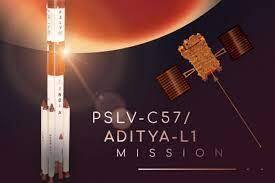Prathamesh Basagare, Pune
Today, September 2, 2023, ISRO’s Aditya L1 was successfully launched from the Satish Dhawan Space Center. Aditya-L1, launched using ISRO’s dependable Polar Satellite Launch Vehicle (PSLV) and weighing around 1,4807.7 kg, is the first class of space-based observatories to study the Sun.
The PSLV rocket carrying the Aditya-L1 spacecraft successfully separated, according to an update from ISRO, and it will now begin its 125-day trip toward the Sun. The chairman of ISRO, S. Somanath, commented on the successful launch of Aditya L-1 and said that the PSLV had precisely meant for the Aditya L1 satellite to be placed in an elliptical orbit. He wants to congratulate the PSLV for launching Aditya L1 into the correct orbit today by utilizing such a creative mission strategy. Aditya-L1 would investigate the Sun’s outer atmosphere, which is a vast sphere of gas. Aditya-L1 won’t touch down on the Sun or get any closer to it, said, ISRO.
Nigar Shaji, the Project Director of Aditya L-1, expressed her joy and gratitude following the successful launch of the mission. She described it as a dream come true and thanked the entire team for their unwavering support and guidance in achieving this milestone. She emphasized the significance of Aditya L-1 as a valuable asset for both India and the global scientific community once it becomes operational.
Union Minister of State for Science and Technology, Dr. Jitendra Singh, hailed the successful launch of the Aditya L1 mission as a moment of pride for India. He acknowledged the relentless dedication of Indian scientists who had worked tirelessly for years, highlighting the mission’s fulfillment of a national pledge. He also praised the holistic approach adopted in India’s scientific endeavors, involving the entire scientific community and the nation as a whole.
India’s inaugural solar mission, Aditya-L1, carries a total of seven diverse payloads designed for an extensive study of the sun. Four of these payloads are dedicated to observing solar light, while the remaining three are focused on measuring in-situ parameters related to plasma and magnetic fields.
The Aditya-L1 mission is anticipated to reach its designated observation point in approximately 126 days, equivalent to four months. However, the Indian Space Research Organisation (ISRO) has not yet provided a specific date or time for this achievement. The mission will orbit around Lagrangian Point 1 (L1), located 1.5 million kilometers away from Earth, in the direction of the sun.
Caption- PSLV launched with Aditya L1 on board, from Satish Dhawan Space Centre in Sriharikota, Andhra Pradesh.
